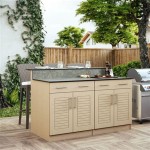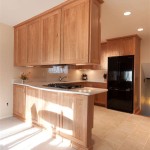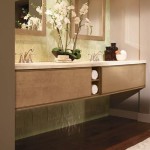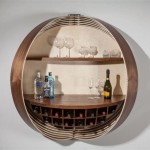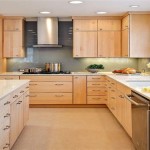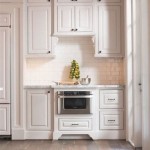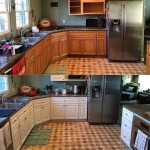Reviving Your Kitchen Cabinets in NYC: A Comprehensive Guide
Kitchen cabinets in New York City apartments and homes often face a unique set of challenges. Limited space, high usage, and the potential for moisture damage contribute to wear and tear that can leave them looking dated or even damaged. Replacing kitchen cabinets can be a significant undertaking in terms of cost and disruption. Therefore, reviving existing cabinets offers a practical and cost-effective alternative to completely overhauling the kitchen space. This article provides a comprehensive overview of the various methods and considerations involved in reviving kitchen cabinets in NYC, offering guidance for homeowners seeking to refresh their kitchens without undergoing a full-scale renovation.
The process of reviving kitchen cabinets is multifaceted, encompassing cleaning, repair, refinishing, and even minor modifications. The right approach depends on the condition of the cabinets, the desired aesthetic outcome, and the budget allocated for the project. Careful assessment of these factors is crucial for determining the most suitable strategy. Before embarking on any project, homeowners should carefully evaluate the current state of their cabinets to determine the scope of the necessary work.
Assessing the Condition of Your Kitchen Cabinets
The first step in reviving kitchen cabinets is a thorough assessment of their condition. This involves examining the cabinets for various types of damage, including scratches, dents, water damage, peeling paint or veneer, and loose hinges or hardware. This inspection should cover both the interior and exterior surfaces of the cabinets, as well as the doors, drawers, and frames. Pay close attention to areas prone to water exposure, such as around the sink and dishwasher. The severity of the damage will dictate the extent of the required repairs and the most appropriate refinishing method. For instance, minor scratches might only require touch-up paint, while significant water damage could necessitate more extensive repairs or even replacement of certain cabinet components.
Beyond physical damage, the assessment should also consider the overall aesthetic appeal of the cabinets. Are the cabinets outdated in style? Is the existing finish worn or discolored? Does the hardware look old and tired? These considerations will inform the choice of refinishing techniques and hardware upgrades. If the cabinets are structurally sound but simply look dated, a fresh coat of paint or a change of hardware can dramatically transform their appearance. However, if the cabinets are structurally compromised, repairs are essential before any aesthetic enhancements can be made.
The type of material the cabinets are made of is also crucial to consider during the assessment. Solid wood cabinets can often be sanded and refinished multiple times, while cabinets made of particleboard or MDF may be more susceptible to damage and may require different refinishing techniques. Veneer cabinets, which consist of a thin layer of wood glued over a core material, require careful handling to avoid damaging the veneer during the refinishing process. It's important to identify the cabinet material accurately to choose the appropriate methods and materials for revival.
Cleaning and Preparing the Cabinets for Refinishing
Regardless of the chosen refinishing method, thorough cleaning and preparation are essential for achieving a professional and long-lasting result. This process removes dirt, grease, and grime that can interfere with the adhesion of paint or stain. The cleaning process typically involves removing all hardware, such as knobs, pulls, and hinges. The cabinet doors and drawers should be removed from the frames and laid flat on a protected surface for easier access and more even cleaning. A degreasing cleaner specifically designed for kitchen surfaces is recommended to remove accumulated grease and food splatters. Stubborn stains may require more aggressive cleaning with a scrub brush or sponge.
After cleaning, the cabinets should be thoroughly rinsed with clean water and allowed to dry completely. Once dry, the next step is to prepare the surfaces for refinishing. This typically involves sanding the cabinets to create a smooth and receptive surface for the new finish. The grit of sandpaper used depends on the existing finish and the desired outcome. For removing old paint or varnish, a coarser grit sandpaper (e.g., 80-120 grit) may be necessary. For creating a smooth surface for painting, a finer grit sandpaper (e.g., 220 grit) is recommended. Sanding should be done carefully and evenly, following the grain of the wood to avoid scratching. Dust created during sanding should be removed with a damp cloth or a vacuum cleaner with a brush attachment.
If the cabinets have any dents or scratches, these should be filled with wood filler before sanding. The wood filler should be applied according to the manufacturer's instructions and allowed to dry completely before sanding smooth. In some cases, it may be necessary to apply multiple coats of wood filler to fully fill deeper imperfections. After sanding and filling, the cabinets should be primed with a high-quality primer. Primer helps to create a uniform surface for the paint or stain and improves adhesion. A stain-blocking primer is particularly important if the cabinets have been stained in the past or if there are any signs of water damage. The primer should be applied evenly and allowed to dry completely before applying the final finish.
Refinishing Techniques: Painting, Staining, and Refacing
Once the cabinets have been properly cleaned and prepared, the next step is to choose a refinishing technique. The most common refinishing techniques include painting, staining, and refacing. Painting involves applying a new coat of paint to the cabinets, while staining involves applying a new stain to highlight the natural wood grain. Refacing involves replacing the cabinet doors and drawer fronts with new ones while keeping the existing cabinet boxes. The choice of technique depends on the desired aesthetic outcome, the condition of the cabinets, and the budget.
Painting is a versatile option that allows for a wide range of color choices and can be used to completely transform the look of the kitchen. High-quality kitchen cabinet paint is essential for durability and ease of cleaning. Acrylic or latex paints are generally recommended for kitchen cabinets due to their durability, resistance to moisture, and low VOC content. Paint should be applied in thin, even coats, using a brush, roller, or sprayer. Multiple coats may be necessary to achieve full coverage. Sanding lightly between coats helps to create a smooth and professional finish.
Staining is a good option for cabinets made of solid wood with attractive grain patterns. Staining enhances the natural beauty of the wood and can create a warm and inviting look. Staining requires careful preparation and application to achieve an even and consistent color. The stain should be applied evenly with a brush or cloth and allowed to penetrate the wood for the recommended time. Excess stain should be wiped off with a clean cloth. A clear topcoat is typically applied over the stain to protect the finish and enhance its durability.
Refacing is a more extensive option that involves replacing the cabinet doors and drawer fronts with new ones. This can be a good option if the cabinet boxes are in good condition but the doors and drawer fronts are outdated or damaged. Refacing can dramatically change the look of the kitchen without the expense and disruption of replacing the entire cabinet system. Refacing typically involves hiring a professional contractor to measure the existing cabinet boxes and order custom-made doors and drawer fronts. The new doors and drawer fronts are then installed onto the existing cabinet boxes, along with new hardware. This approach allows for modernizing the kitchen’s aesthetic while conserving the fundamental structure.
Beyond these main techniques, other options exist, such as applying decorative finishes like glazing or antiquing to add depth and character to the cabinets. The choice of finish should complement the overall style of the kitchen and the existing décor.
Reviving kitchen cabinets in NYC can be a rewarding project that significantly enhances the look and functionality of the kitchen without the high cost of a complete renovation. By carefully assessing the condition of the cabinets, properly cleaning and preparing the surfaces, and choosing the appropriate refinishing technique, homeowners can achieve professional-looking results that revitalize their kitchen space. Remember to prioritize quality materials and careful workmanship to ensure a long-lasting and aesthetically pleasing outcome. This process demands patience and precision, but it often yields impressive results, transforming aging cabinets into attractive and functional features of the home.

A 90 Square Foot Kitchen S Compact Appliances Sweeten

Reviving An Outdated Kitchen 7 Strategies For A Modern Makeover Affordable Granite Cabinetry

Renovating A Kitchen Don T Forget The Most Crucial Thing Light New York Times

Cabinet Painting Paintworks Decorating

Custom Kitchen Cabinets Buffalo Clarence Orchard Park Ny Kreative Kitchens Baths
The Beloved Kitchen Cabinet Trend I Wish Had Never Tried It Stresses Me Out Every Single Day

A 1930s Green Kitchen Brightens Up In The Bronx Sweeten Com

Kitchen Of The Week Red Cabinets Revive A Midcentury Gem

Kitchen Cabinet Painting In Troy Ny Funcycled

Cabinet Painting Paintworks Decorating
Related Posts

